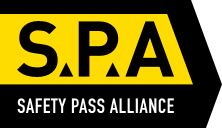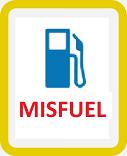Since coal was first used in London in the 13th century, people have been concerned about the quality of air. Parliament has been legislating since 1845 to control air quality, particularly pollution caused by industry.
Today, about 40,000 deaths in the UK each year are thought to be attributable to exposure to outdoor air pollution. In the Liverpool area alone, a study recently reported 1,000 deaths a year could be directly linked to air pollution. The greatest impact was on the poorest households.
Road transport is the primary source of toxic air, but it is thought that construction sites are responsible for 7.5 per cent of nitrogen oxide emissions, 8 per cent of large particle emissions and 14.5 per cent of emissions of the most dangerous fine particles. The main sources are construction dust, plant machinery and construction transport. Many projects take place near those most vulnerable to the effects of poor air quality, such as those who live, study or work near busy roads.
Regulation and intervention
The result is a difficult issue for the construction industry to grapple with. Ambient air pollution is not an issue currently regulated by the Health and Safety Executive (HSE), making it difficult for construction companies to know what measures, if any, they ought to put in place to mitigate the risk posed to the public and employees by air pollution. But the law approaches risk and safety as relative concepts.
“While management of risks posed by air pollution does not appear to be on the HSE’s agenda, that situation can be expected to change”
As knowledge increases, so too does the inevitability of intervention by regulators. The Health and Safety at Work etc Act 1974 imposes general duties on employers to ensure the health and safety of employees and non-employees – the general public – that are sufficiently broad to encompass any activity making a material contribution to toxic air. A breach of the duties imposed by the act and related regulations is a criminal offence, for which very substantial fines can be imposed on corporations.
Under the Environment Act 1995, central government is required to produce a national air quality strategy. Local authorities are also required to review air quality in their area. Where air quality limits are exceeded, councils must designate air quality management areas (AQMAs) with set air quality objectives. Extra controls can be introduced.
In practice, this means that construction companies operating in different parts of the country must be aware of what requirements the local authority imposes in relation to air quality management. For example, in Greater London there are strict emissions standards for non-road mobile machinery (NRMM) with still tighter standards to comply with from 1 September 2020.
Best practice
Many construction companies are going beyond local authority and planning requirements and are adopting best practice. The Spotlight on… air pollution campaign from the Considerate Constructors Scheme raises awareness of the impact of air pollution and provides the industry with advice on tackling the issue. It highlights how air quality plans can be drafted, dust-management measures adopted, and action taken to address emissions from NRMM.
Advisory body the Centre for Low Emission Construction also provides guidance encouraging an uptake of low emission approaches, with mitigation such as dust suppressants, diesel fuel alternatives and construction logistics plans. Other recommended steps include the use of hybrid machines, which reduce diesel fuel consumption, and the use of lighting rigs powered by hydrogen fuel cells.
The British Safety Council also provides free advice to help employers establish measures to mitigate the risks posed by air pollution. Their mobile app Canairy (presently only available in London) maps an individual’s exposure to pollution on an hourly basis. It is a risk management tool, to enable employer and employee to work together to improve health and minimise the risks posed by air pollution. The app has been trialled by Kier.
While the management of risks posed by air pollution does not appear to be on the HSE’s agenda, that situation can be expected to change. In the meantime, construction emissions pose both a reputational and civil litigation risk, meaning air pollution should now be put firmly on both the environmental and safety agendas of all construction companies.
Keith Morton QC and Fiona Canby are barristers specialising in health and safety, inquests and inquiries at Temple Garden Chambers
Construction News



















